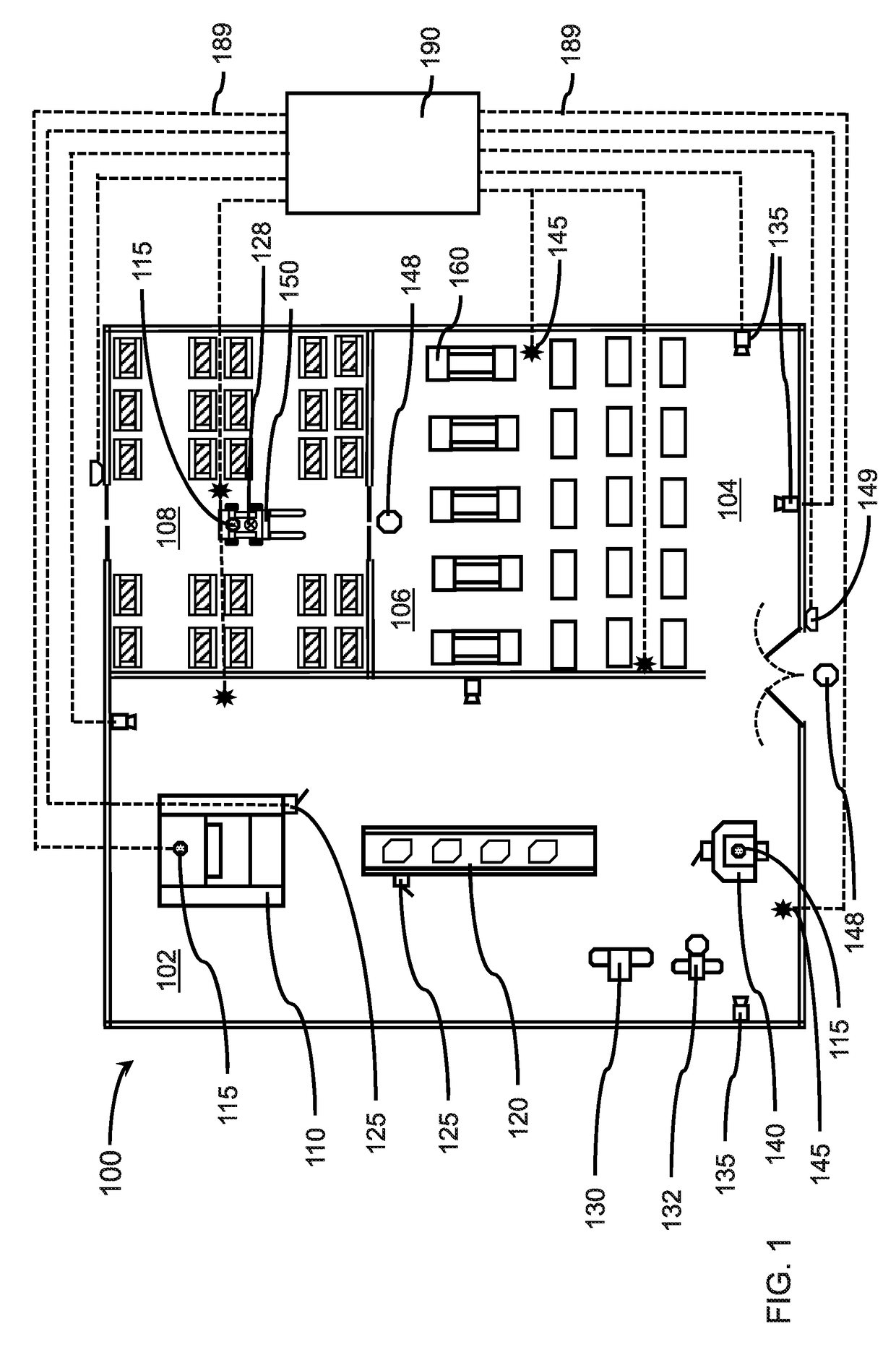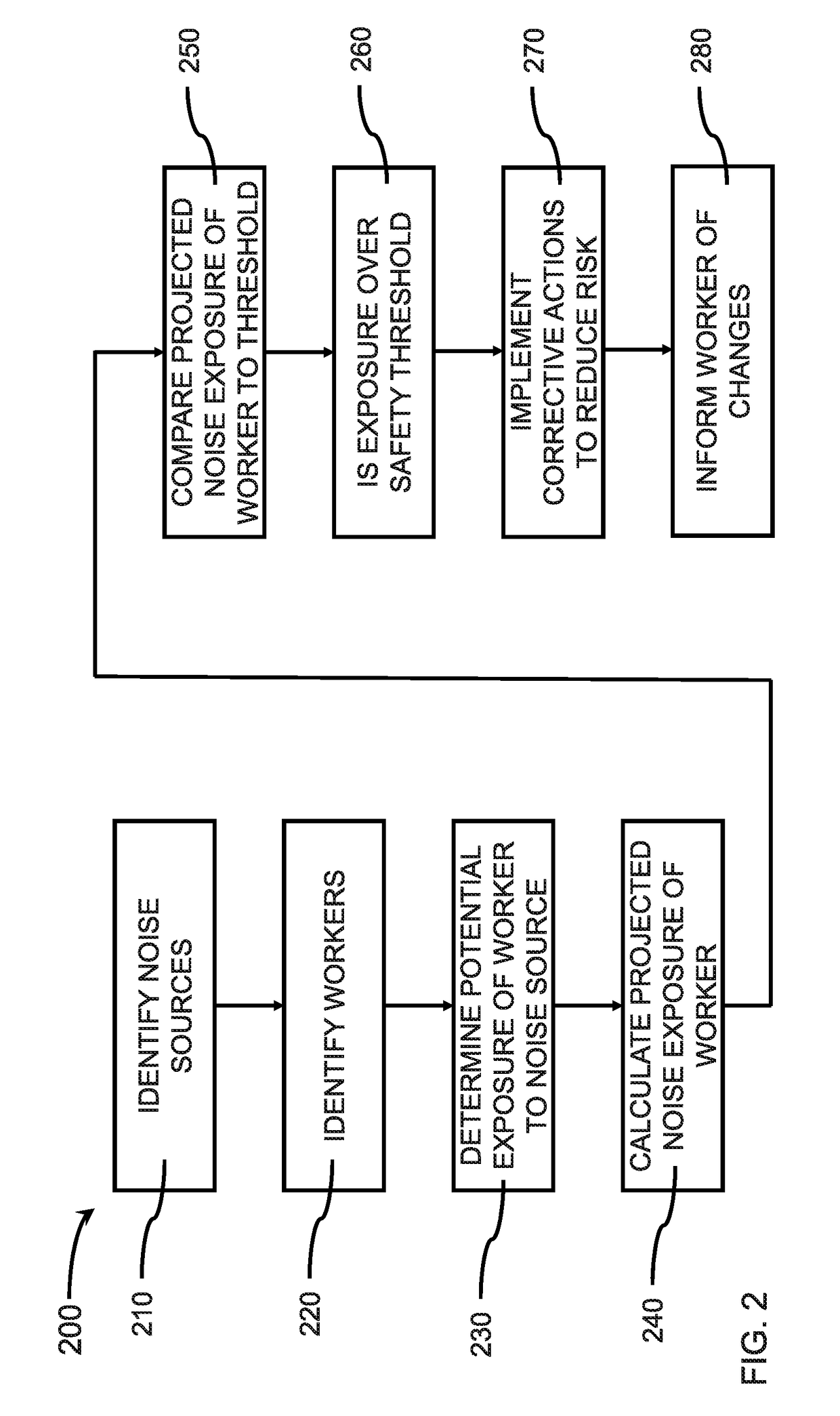Predicting harmful noise events and implementing corrective actions prior to noise induced hearing loss
a technology of harmful noise and hearing loss, applied in the field of environmental monitoring, to achieve the effect of avoiding harmful noise levels
- Summary
- Abstract
- Description
- Claims
- Application Information
AI Technical Summary
Benefits of technology
Problems solved by technology
Method used
Image
Examples
Embodiment Construction
[0018]Often, people are exposed to loud noises because they have not been forewarned that such noises are likely to occur, for example, from a machine in a factory starting up a production run, or a jet coming in for a landing at an airport. While the general environment may suggest loud noises can occur, the actual occurrences may be intermittent and / or without sufficient warning, such that individuals are not outfitted with their personal protective equipment (PPE) or do not have sufficient notice to put on their PPE. A system that predicts the occurrence of loud noises can address the hazards by providing sufficient time or changes to the environment to avoid such loud noise events.
[0019]A worker may also travel between different workplace environments that pose different levels of auditory danger, for example, a warehouse may be relatively quiet compared to a production floor on which metal stamping is occurring. A forklift driver or material handler may transition from the ware...
PUM
 Login to View More
Login to View More Abstract
Description
Claims
Application Information
 Login to View More
Login to View More - R&D
- Intellectual Property
- Life Sciences
- Materials
- Tech Scout
- Unparalleled Data Quality
- Higher Quality Content
- 60% Fewer Hallucinations
Browse by: Latest US Patents, China's latest patents, Technical Efficacy Thesaurus, Application Domain, Technology Topic, Popular Technical Reports.
© 2025 PatSnap. All rights reserved.Legal|Privacy policy|Modern Slavery Act Transparency Statement|Sitemap|About US| Contact US: help@patsnap.com



